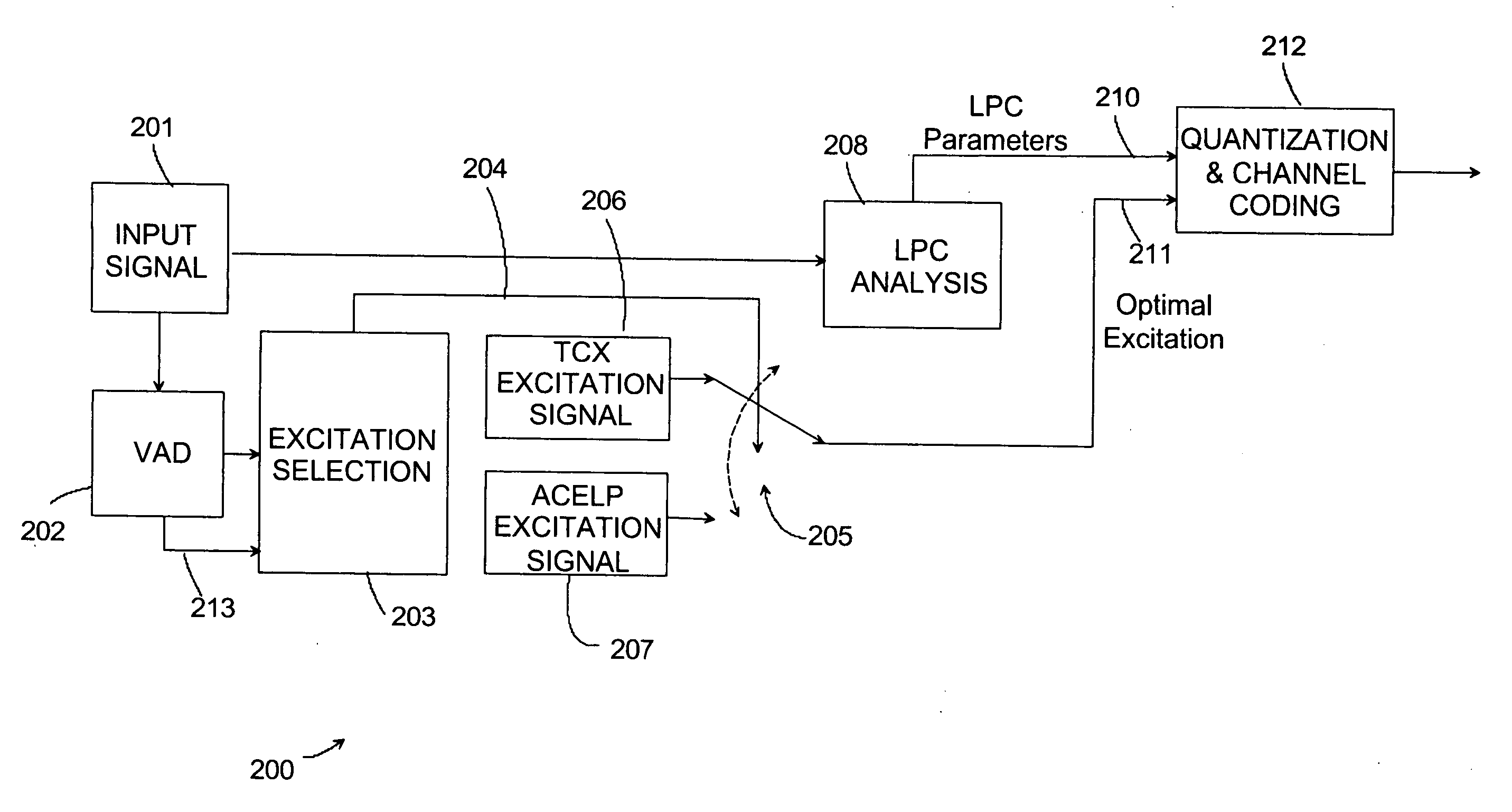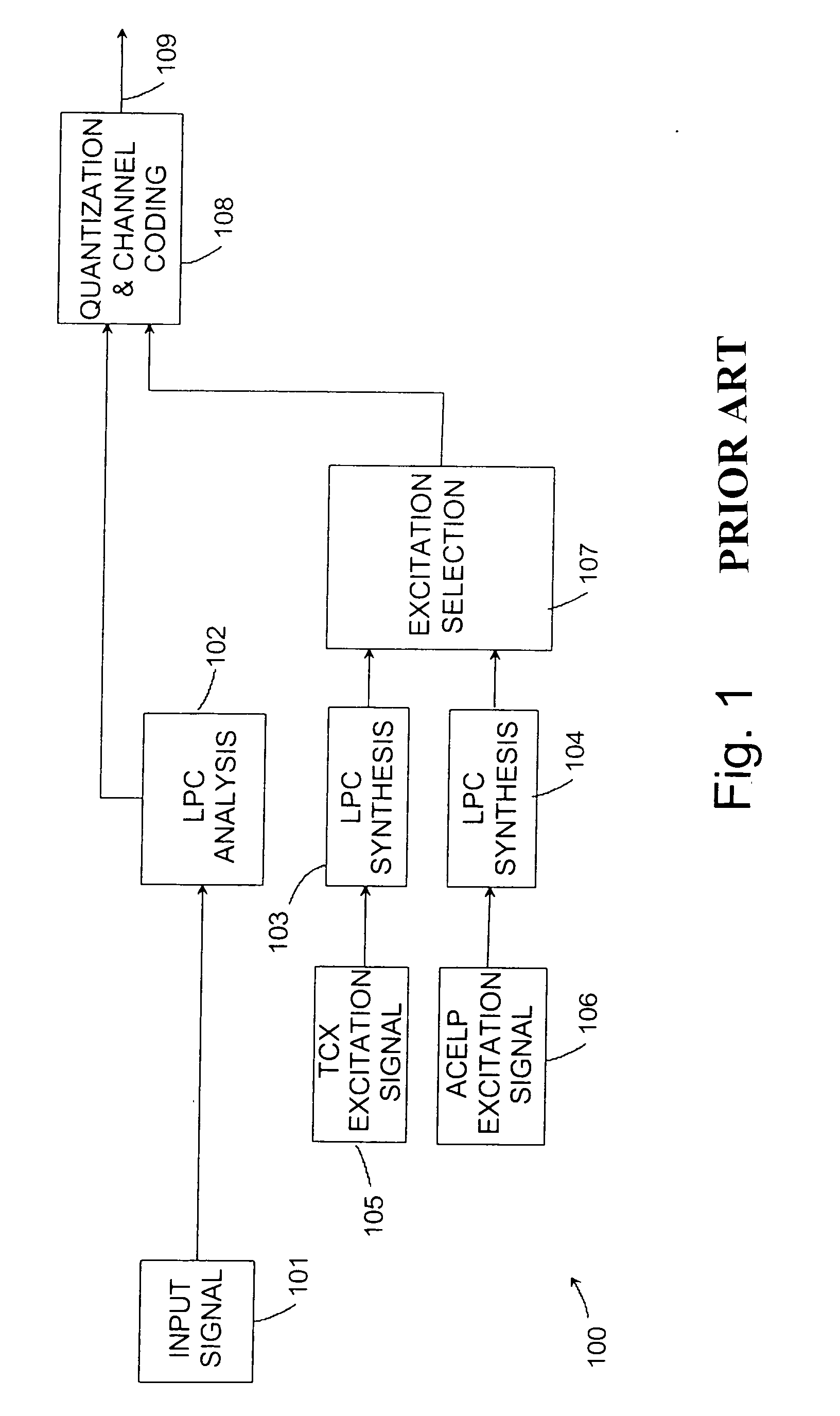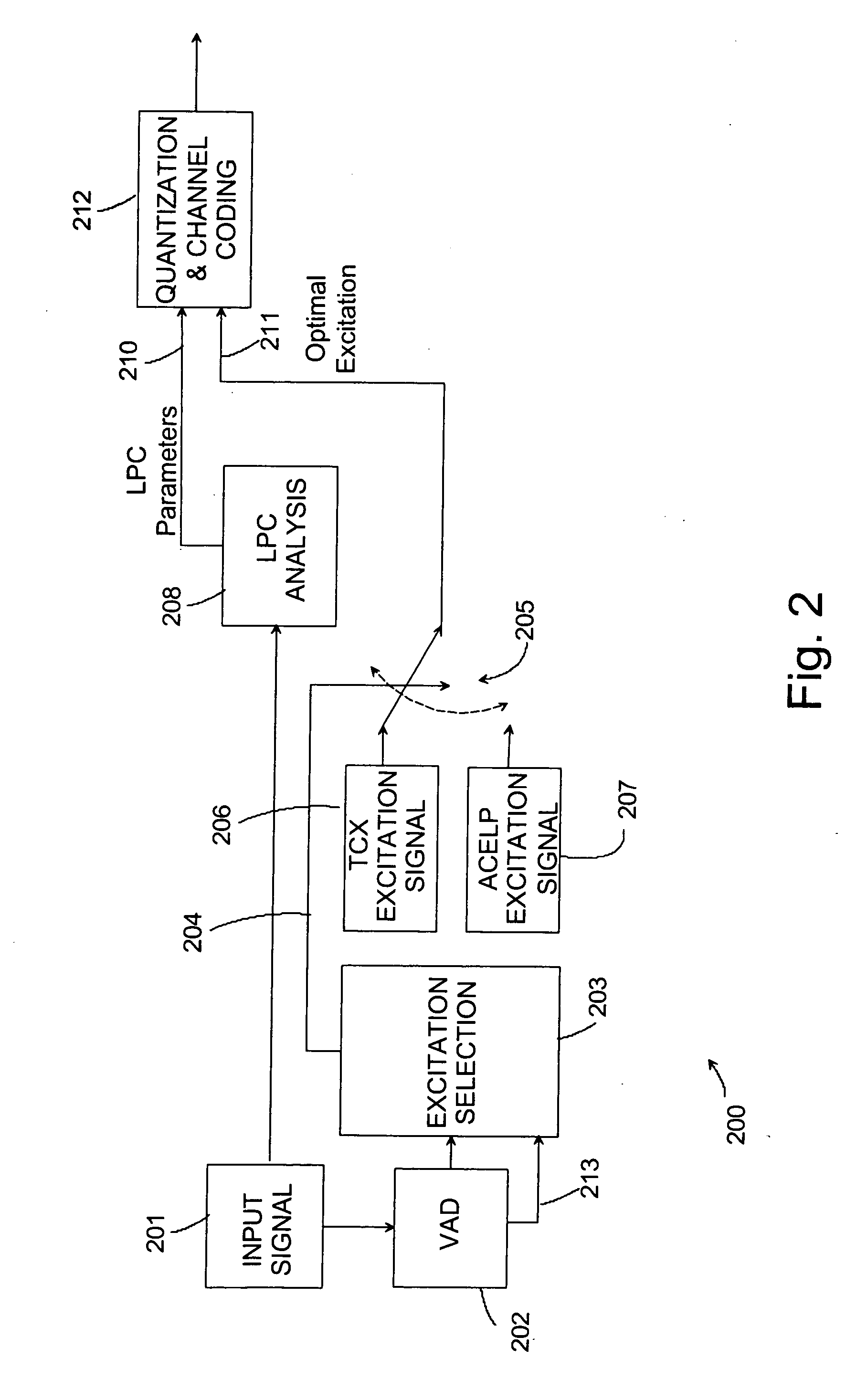Classification of audio signals
a technology of audio signals and audio signals, applied in the field of speech and audio coding, can solve the problems of information loss, lossy or lossless compression, limited radio channel capacity over the wireless air interface, etc., and achieve the effect of improving the reproduction sound quality, and improving the quality of the sound signal
- Summary
- Abstract
- Description
- Claims
- Application Information
AI Technical Summary
Benefits of technology
Problems solved by technology
Method used
Image
Examples
Embodiment Construction
[0032] In the following an encoder 200 according to an example embodiment of the present invention will be described in more detail with reference to FIG. 2. The encoder 200 comprises an input block 201 for digitizing, filtering and framing the input signal when necessary. It should be noted here that the input signal may already be in a form suitable for the encoding process. For example, the input signal may have been digitised at an earlier stage and stored to a memory medium (not shown). The input signal frames are input to a voice activity detection block 202. The voice activity detection block 202 outputs a multiplicity of narrower band signals which are input to an excitation selection block 203. The excitation selection block 203 analyses the signals to determine which excitation method is the most appropriate one for encoding the input signal. The excitation selection block 203 produces a control signal 204 for controlling a selection means 205 according to the determinatio...
PUM
 Login to View More
Login to View More Abstract
Description
Claims
Application Information
 Login to View More
Login to View More - R&D
- Intellectual Property
- Life Sciences
- Materials
- Tech Scout
- Unparalleled Data Quality
- Higher Quality Content
- 60% Fewer Hallucinations
Browse by: Latest US Patents, China's latest patents, Technical Efficacy Thesaurus, Application Domain, Technology Topic, Popular Technical Reports.
© 2025 PatSnap. All rights reserved.Legal|Privacy policy|Modern Slavery Act Transparency Statement|Sitemap|About US| Contact US: help@patsnap.com



